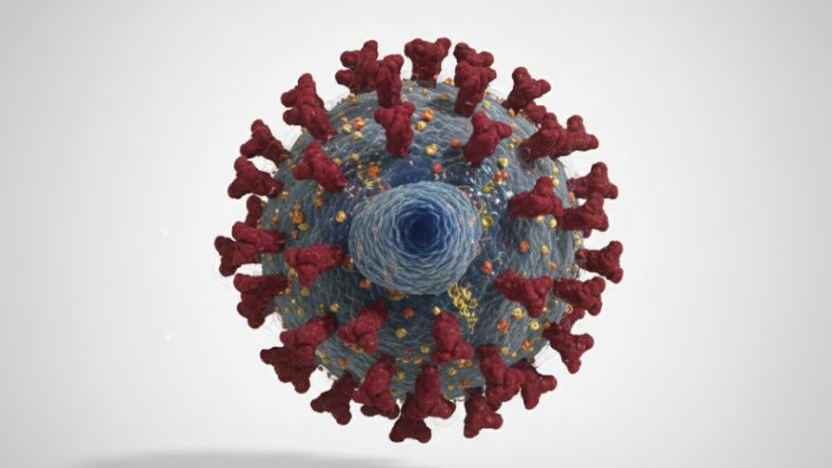German scientists discover new antibody with great potential to be a cure for the HIV virus.

Researchers at the University of Cologne, in Germany, have announced a discovery that could change the course of the fight against HIV-1. They identified a powerful antibody, called 04_A06, which has shown the ability to neutralize almost all known variants of the virus in laboratory tests. This is an impressive scientific achievement, as HIV is notorious for its ability to mutate and evade both the body's defenses and drug treatments. Seeing an antibody that can “see” and attack the virus despite so many mutations brings new hope to millions of people.
Over the past 40 years, HIV has been one of the greatest challenges in medicine. Since its discovery in the 1980s, the virus has infected more than 80 million people worldwide, and to this day, there is still no definitive cure. Although current treatments keep the disease under control and allow people to live with good quality of life, the virus remains a global threat, especially in regions with limited access to healthcare. That’s why a discovery like this sparks so much interest and optimism.
Why is this important?
HIV is a highly mutable virus. It multiplies rapidly inside the body, and with each new generation, small changes occur in its genetic code. These alterations allow it to outsmart the immune system and reduce the effectiveness of vaccines and drugs. For this reason, every step forward against HIV is like trying to hit a constantly moving target.
The 04_A06 antibody stands out because it was able to act against virtually all tested variants, including those that typically resist known treatments. This broad neutralizing capability is what makes the discovery so significant. In simple terms, it’s as if the virus keeps changing its clothes to fool the body, but the antibody can still recognize the enemy, even in disguise. It acts as a “universal detector” that identifies parts of the virus that almost never change.
For the general public, this could be compared to a computer antivirus program that can identify malicious software even if it changes its name, color, and form. The 04_A06 does something similar inside the body, recognizing the “heart” of the virus — the part it can’t hide without ceasing to function.
How the discovery was made
Scientists analyzed the blood of 32 people known as “elite neutralizers.” These are rare individuals who, despite being infected with HIV, have such an efficient immune response that the virus can barely replicate. These people attract great scientific interest because their bodies naturally produce extremely potent and effective antibodies.
From these samples, the researchers isolated more than 800 different antibodies, but one stood out: 04_A06. It showed remarkable results in tests. It was able to neutralize about 98% of the 332 HIV variants analyzed — and at very low concentrations. This means that even small amounts of the antibody were enough to block the virus. This combination of strength and breadth of action is extremely rare.
In experiments with mice that had been given human cells, the antibody reduced the amount of virus in the blood to undetectable levels. Even more impressively, this reduction lasted for a long period — something few antibodies had achieved before. This shows that 04_A06 could provide lasting, not just temporary, protection.
What makes 04_A06 different
The secret lies in how it binds to the virus. 04_A06 has a small insertion in its structure — a kind of “extra arm” — that reaches hidden regions on the surface of HIV. These regions, known as “conserved sites,” are essential for the virus’s function and therefore change very little over time. It’s as if the antibody knows exactly where to strike a weak point the virus cannot protect without destroying itself.
Molecular structure studies showed that this antibody acts at a site called the “CD4 binding site” — the area where the virus attaches to human cells. By binding to this region, 04_A06 prevents the virus from entering the cell and starting its replication process. This direct action is what makes it so promising for both preventive and therapeutic applications.
Another important detail is that this antibody appears to be very stable. Under laboratory conditions, it maintained its potency over long periods — a crucial feature for potential human treatments. A long-lasting antibody could mean less frequent applications, perhaps a single dose every few months — something far more practical and accessible than the daily use of antiviral drugs.
The potential impact of this discovery
If 04_A06 proves to be safe and effective in humans, it could revolutionize both HIV prevention and treatment. Imagine someone at high risk of infection — for example, healthcare workers or partners of HIV-positive individuals — receiving a single dose of this antibody and remaining protected for months. Similarly, those already living with the virus could use it alongside other medications to maintain undetectable viral loads, reducing the risk of transmission.
Moreover, the study helps deepen our understanding of the immune system. Learning how the bodies of “elite neutralizers” create such effective antibodies could pave the way for new vaccines — not only against HIV but also against other complex viruses like influenza and hepatitis.
Challenges that still need to be overcome
Despite all the excitement, science advances cautiously. The antibody still needs to go through several phases of clinical trials in humans before it can be considered safe and effective for general use. Researchers must confirm whether it works the same way in people with different immune profiles, ages, and health conditions.
Another challenge is cost. Producing monoclonal antibodies is expensive, and global access remains limited. Making this technology affordable, especially in countries where HIV is most prevalent, will be as important as the scientific breakthrough itself.
Additionally, HIV has shown an incredible ability to adapt in the past. Even if 04_A06 targets conserved regions, the virus may eventually find new escape routes. For this reason, many scientists believe the ideal future lies in combining multiple antibodies — creating an immune “cocktail” capable of covering all possible variants.
A historic step in the fight against HIV
Since the first recorded AIDS cases, science has come a long way. Today, HIV is no longer a death sentence but remains a chronic condition requiring constant treatment. The discovery of 04_A06 represents a new chapter in this story — one filled with hope.
Even if it takes years to reach the market, this kind of progress shows that scientific knowledge is increasingly capable of turning the impossible into reality. Research like this also underscores the importance of investing in science and international collaboration, as major breakthroughs rarely happen in isolation.
Conclusion
The discovery of the 04_A06 antibody is one of the most promising in recent years. It shows that it is possible to fight HIV with smarter, longer-lasting strategies. Although there is still a long way to go before this technology becomes widely available, the initial results are encouraging and renew the hope that, in the not-too-distant future, we may finally control HIV once and for all.
In the meantime, prevention remains essential: condom use, regular testing, and proper treatment for those living with the virus are still the most effective tools. Science continues to advance, but awareness and daily care remain fundamental in the fight against HIV.
- Nature Immunology – “Profiling of HIV-1 elite neutralizer cohort reveals a CD4bs bNAb for HIV-1 prevention and therapy”
- University of Cologne – “Antibody discovered that blocks almost all known HIV variants in neutralization assays”

